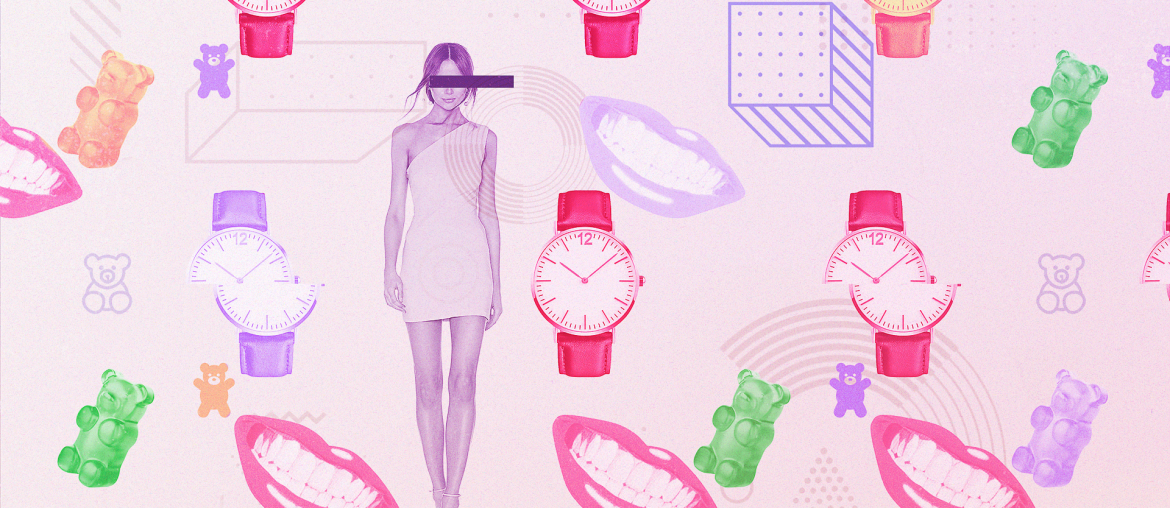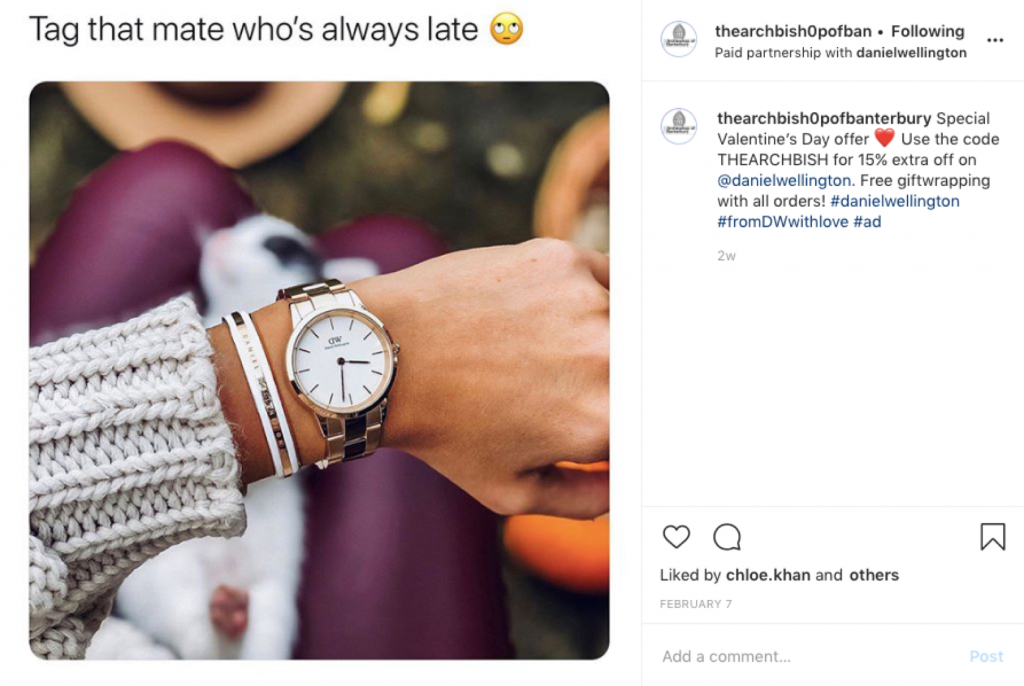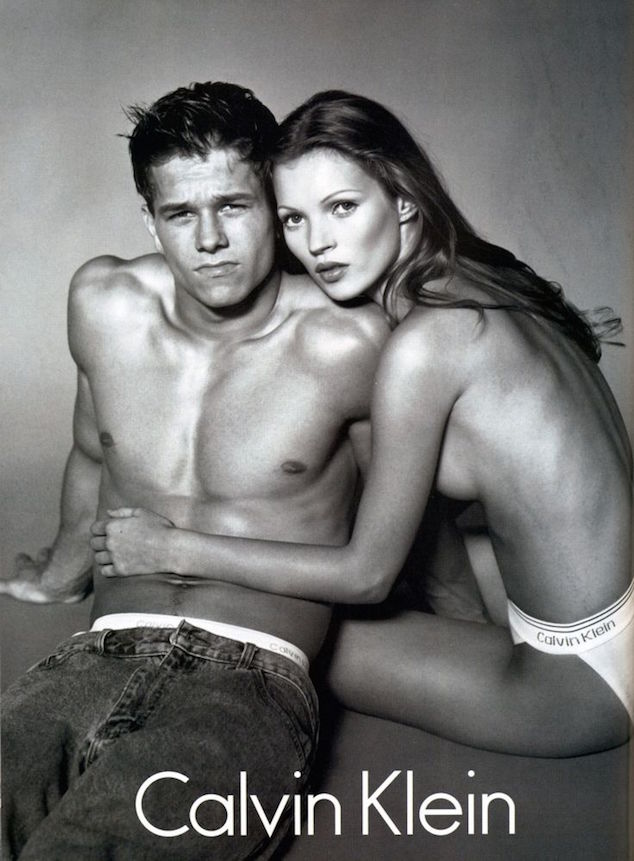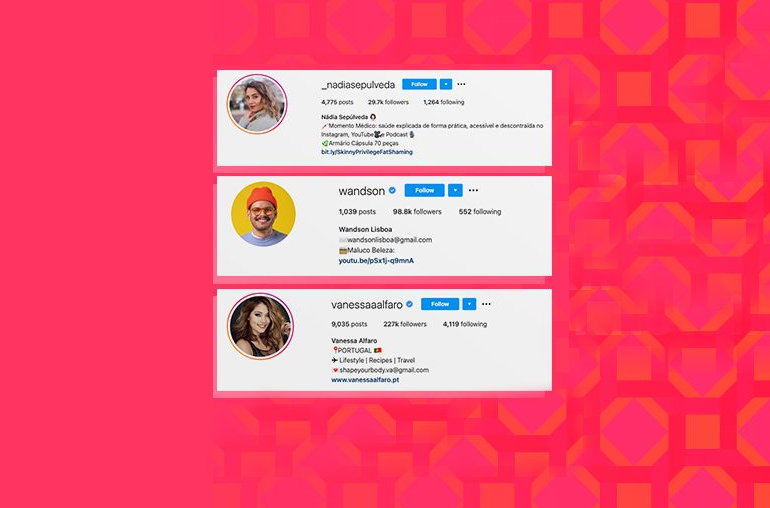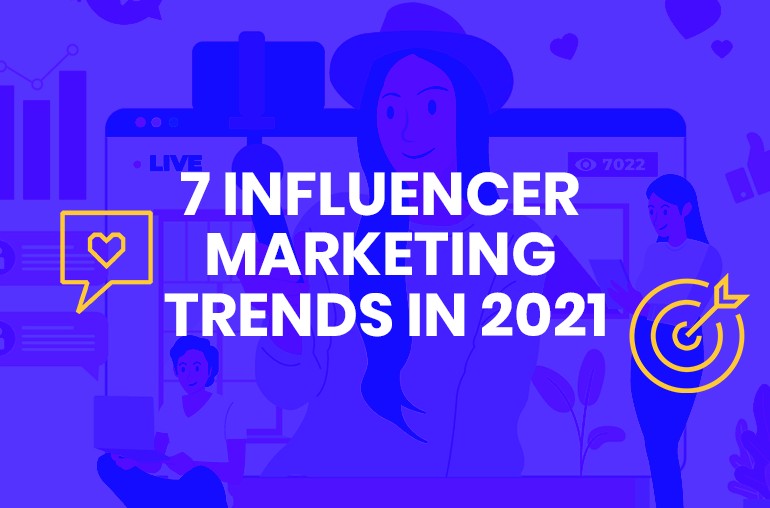Two months into the new year, and it seems that 2020 is the year that everyone wants to step-up their influencer marketing game. To give you a kick-start and some healthy inspiration, Primetag will be looking back and reflecting on the most memorable influencer marketing campaigns of the past decade.
For years now companies have been trying to achieve viral success through carefully selected influencer marketing campaigns, today we will be highlighting companies who got that critical formula just right. We will be taking a close examination into what made their content so appealing. What ingredients were involved in their recipe for online success, and how much “Return on Influence” they achieved.
Keep scrolling to learn more about the 3 game-changing marketing campaigns that were the talk of gram-town.
You may also like ‘Puig Brothers, Creators of Jordi Koalitic: Earning 13.5 Million TikTok Followers in 6 Months’
Daniel Wellington’s Influencer Marketing Campaign
- Small Accounts Make Big Noise: many small accounts can be as good, if not better, than a few big ones
- A Bit of Competition Never Hurt: everyone and their mothers were joining in on the action
- Use Humour: when given the chance tickle their funny bone
A brand seeing the value in multiple content creators with smaller followings making a large, if not, larger impact than a few macro creators ever could, is Daniel Wellington. The Swedish watch company made $230 million in revenue and $111.5 million in profit in 2016 and was named the fastest-growing private company in Europe the following year.
The CEO of the company, Filip Tysander, noticed that traditional watch companies were not investing their time and money in influencer marketing campaigns. Many of them who did spend money on Instagram, for example, were investing in Instagram ads and not influencers. The young entrepreneur envisioned a watch that could appeal specifically for the young generation of Instagram consumers and thus Daniel Wellington was born. Tysander is now sitting comfortably on a 123 Million USD reward for his efforts.
Small Accounts Make Big Noise
Using influencers as their brand models, there are now over 2 million posts using the tag #danielwellington on Instagram, fueling the brand’s user-generated content strategy. The brand started off by using as many micro-influencers as possible for their influencer marketing campaign, with a huge range of different followings, but are all young consumers.
Daniel Wellington cashes in on the minimalistic aesthetic trend the most; the watches, the outfits of people wearing them and the setting of the photos all follow a similar theme. This trend has been circling for a long time now, similar to the marble pattern trend, that time when suddenly every 20-something girl had to have one of those marble phone cases.
Millennials are clearly valuing aesthetic above many other qualities. This is evident in the fact that the Daniel Wellington watch itself is of low quality from a factory in China. According to Bloomberg “Filip Tysander is making a killing selling inexpensive, Chinese-built timepieces (that look fancy)”. But these aspects seems to be overlooked by the fact that every influencer is wearing one.
The more people showing off the simple time-piece, the more a consumer will trust the brand, simply based on the pure amount of Daniel Wellington customers they see.
A Bit of Competition Never Hurt
In addition to the volume of content that the brand has managed to get pumped out in the past decade, Daniel Wellington also engaged continuously with Instagram users. The company hosted multiple contests and discounts with call-to-actions, to hype up the watches in some healthy competition.
Daniel Wellington famously hosted a ‘pic of the day’ contest frequently, and those who won were not only added to the Daniel Wellington Instagram page but also won a free watch. These competitions encouraged anyone and their mothers to join in the action and try and create the most repost-worthy pictures possible. Eventually, this grew to users posting anything from them on mountains, to relaxing on boats, to lounging in their beds, it was becoming clear the boundless places you could wear these simple watches.
In 2014, they reached the milestone of one million timepieces in annual sales, having only been in operation for 3 years. For reference, Rolex took 111 years to reach that milestone, and Tag Heuer operated 156 years before they made one million yearly sales.
Use Humour
Content creators that brands often overlook for their influencer marketing campaigns are humour pages aka ‘meme pages’. These pages that many companies don’t even consider in their influencer marketing strategy are some of the most popular pages on the internet, the account @epicfunnypage has just reached the 17 million followers mark. Daniel Wellington wasn’t held back by any limitations, they had no-bounds to the accounts they would work with, as long as there were young viewers, it ticked the box.
Revolve
- Build an Unbreakable Bond With Your Content Creators: make them more than just your business partners
- Location, Location, Location: always be the talk of the town
- A Little Party Never Killed Anybody: celebrate your creators and the creators will celebrate you
Similar to the aforementioned brand, the clothing e-tailer Revolve utilised content creators as their main vehicle of promotion, comprised of fashion experts and influencers instead of professional models to showcase its brands. The company placed all its cards in the Instagram game and collected about 3,500 small, mid- and macro-tiered influencers selling trendy clothing to stylish, social media savvy young women.
The eCommerce clothing brand started working with fashion bloggers back in 2009 before Instagram even launched. “It has since built one of the most sophisticated influencer marketing machines in the industry, turning a yearly investment of $18.5 million into hundreds of millions of dollars’ worth of earned media, according to Tribe Dynamics.” Reports Vogue Business.
Revolve was early into the influencer marketing game and faced a lot of backlash, in the beginning, investors of all backgrounds were sceptical of their strategies and many didn’t even know what influencers were. Regardless, Revolve stuck to what is believed to be the most lucrative method to target the Gen Zs and millennials, and they have the receipts to prove it.
Build an Unbreakable Bond With Your Content Creators
One of the most admirable traits of Revolve is their ability to connect with the creators they work with in their influencer marketing campaigns, they are friends with their content creators and spoil them as often as they can. The company pours out dozens of dollars to fly the fashion influencers on around-the-world vacations and luxurious holidays. The girls will attend musical performances, dinners and lounge poolside, and post about the whole experience on their social media channels, with links to purchase the pieces they’re wearing.
This method of working with their Instagram connoisseurs gives a huge incentive for influencers to partner with Revolve, knowing that the company will pull out all the stops for some of them.
Not only is the brand sending their models on these vacations but they are also spending millions on hosting lavish parties and putting them up in the best hotels, as part of their glamourous influencer marketing campaign.
Location, Location, Location
When I say that Revolve organises events, they really organise an experience everyone will remember. The brand initially started by hosting luxurious parties, investing hundreds and thousands into hiring high-profile artists, performers and DJs, to bring in more influencers and post more content.
In addition to these parties, the company started hosting an annual Revolve awards show, giving the opportunity for its influencers to dress up in sophisticated Revolve dresses and parade around a red carpet being flashed by paparazzi. This event enables the content creators to feel special and appreciated by the brand, presenting awards to some of the most remarkable influencers.
A Little Party Never Killed Anybody
The fashion company soon expanded to making one of the most in-demand parties of the year, the Revolve Coachella party, a haven for influencers attending one of the biggest festivals in the world. Coachella had become the party that millions flock to the US for every year and the most talked about event of the season, particularly for trendsetters, celebrities and content creators alike. Revolve seized this opportunity to make their name in the two most critical weekends for their content creators.
The annual Revolve festivals soon became the parties everyone was talking about online and the event turned into a celebration of the brand. The invitees were all handpicked to be the most high-profile and showed a high amount of appreciation for the brand. The company wanted to bring people together to not only have a good time with the unlimited amount of In-And-Out burgers, alcohol, coffee, theme park rides, makeup bars and of course an abundance of photo opportunities but also to celebrate the brand.
Revolve’s commitment to their events is unmatched, they really go all out and even break their own budget, but claim it’s a priceless investment for the brand. The company put up over 90 top-tier influencers from over 14 countries and a handful of worthy editors in a mega hotel near the event in 2018. All the expenses accumulated to be way over their budget “I was doing the budget and I kind of broke the budget,” laughed Revolve CEO Michael Mente after he was asked about the event by Fashionista magazine.
The company may be damaged in the short-term financially but by no means reputably, their events pay off in the long-run and the brand sees no reason to stop their wild parties any time soon.
Calvin Klein
- User-Generated Content is King: the most convincing thing of all – ain’t anybody paying them and yet they are promoting your merch
- Campaigns Don’t Have to Come With an Expiry Date: great campaigns never die
- Back to the Future: giving a nod to your past self can push you forward
Starting back in 2014, Calvin Klein managed to dress everyone who was anyone online and lived notoriously in the accounts of thousands of content creators and trendsetters. The idea was simple; a couple of mirror snaps in the underwear, a few splashes of the logoed waistband peeking out over sweatpants or under covers, and every once in awhile paired nicely with a pair of low riding jeans (also CK of course). All using the hashtag #MYCALVINS this simple movement caused quite the stir in the generation of Instagram users and soon Calvin Klein was dominating the app.
Just four months into the hashtag and in #MyCalvins saw more than 4.5 million interactions between the brand-posted content, influencer posts and celebrity sponsored content.
User-Generated Content is King
Similar to Daniel Wellington, Calvin Klein also discovered how to use user-generated content to their advantage and push their influencer marketing campaign to new heights. Calvin Klein cleverly kicked off their #MyCalvins campaign with some of the biggest names in the game, from the Biebs to the Kardashian-Jenner-Wests and before they knew it almost 800,000 people had posted using the hashtag. Suddenly every influencer, and every jane and john doe, were getting in on the action, pushing the brand’s recognition further and further.
The most valuable part of user-generated content is that you don’t have to delegate expenses and yet you are advertising to large audiences. Additionally, their followers will be their friends and family, and when this user creates the post, it becomes successful word-of-mouth-marketing.
This sort of method has been working even before the birth of the internet and is renowned as one of the most effective forms of marketing. An unpaid, genuine post by a friend endorsing a brand is more powerful to young people than a canned source like commercials or a clearly sponsored post. Therefore, everyone who posted with the hashtag is subtly nudging their followers, telling them that they wear this brand and clearly love it enough to post a half-dressed picture of themselves. Pretty sure that speaks volumes.
The hashtag started back in early 2014 and 7 years later and to this day, people are posting in their Calvin Kleins and using the hashtag. It’s free exposure for CK and there is no telling when or if this user-generated content will stop.
Calvin Klein soon enlisted the faces (and bodies) of Justin Beiber and Kendal Jenner, these photos really took them to the next level. As soon as Justin posted to his Instagram account of over 100 million, and Jenner ditto, Calvin Klein earned 3.6 million additional followers across its social channel, WWD reported shortly after its launch.
Campaigns Don’t Have to Come With an Expiry Date
The Jenner and Biebs partnerships with the brand brings us to our next point about the longevity of an influencer marketing campaign. Well, there doesn’t always have to be one. The hashtag is still very much alive and well, and CK are still shooting with the same stars from 2014 and some new ones. All of whom are popular among millennials, from Shawn Mendes to Lil Nas to Sza, and all the way back around to Kendal and Bieber again.
In fact, Jenner posted another #MyCalvins just 4 days ago and Bieber is back at it too, guess they haven’t taken off #theirCalvins for the past 7 years. In addition to the tag, the brand has made numerous extensions of the campaign, #DealWithIt being the latest. No matter what the next extension is, all of this just goes to show some of the best campaigns really don’t have an end date.
Back to the Future
Another element to the #myCalvins success was their ability to interact with the past and give a nod to a previous photoshoot that ruffled more than a few feathers. The famous photos of Justin Bieber and Lara Stone from 2015 were strikingly similar to a shoot the brand did back in 1992 with Mark Wahlberg and Kate Moss.
Furthermore, a big part of their influencer marketing campaign is sound bites from previous campaigns that were some of their most controversial. One of which was a young Brooke Shields saying “You wanna know what comes between me and my Calvin’s? Nothing.” back in 1981. The advert caused all hell to break loose and the company faced some strong backlash. Fast forward almost 40 years later and the brand is still causing a stir, well if their shtick is to be provocative then, it’s still working.

